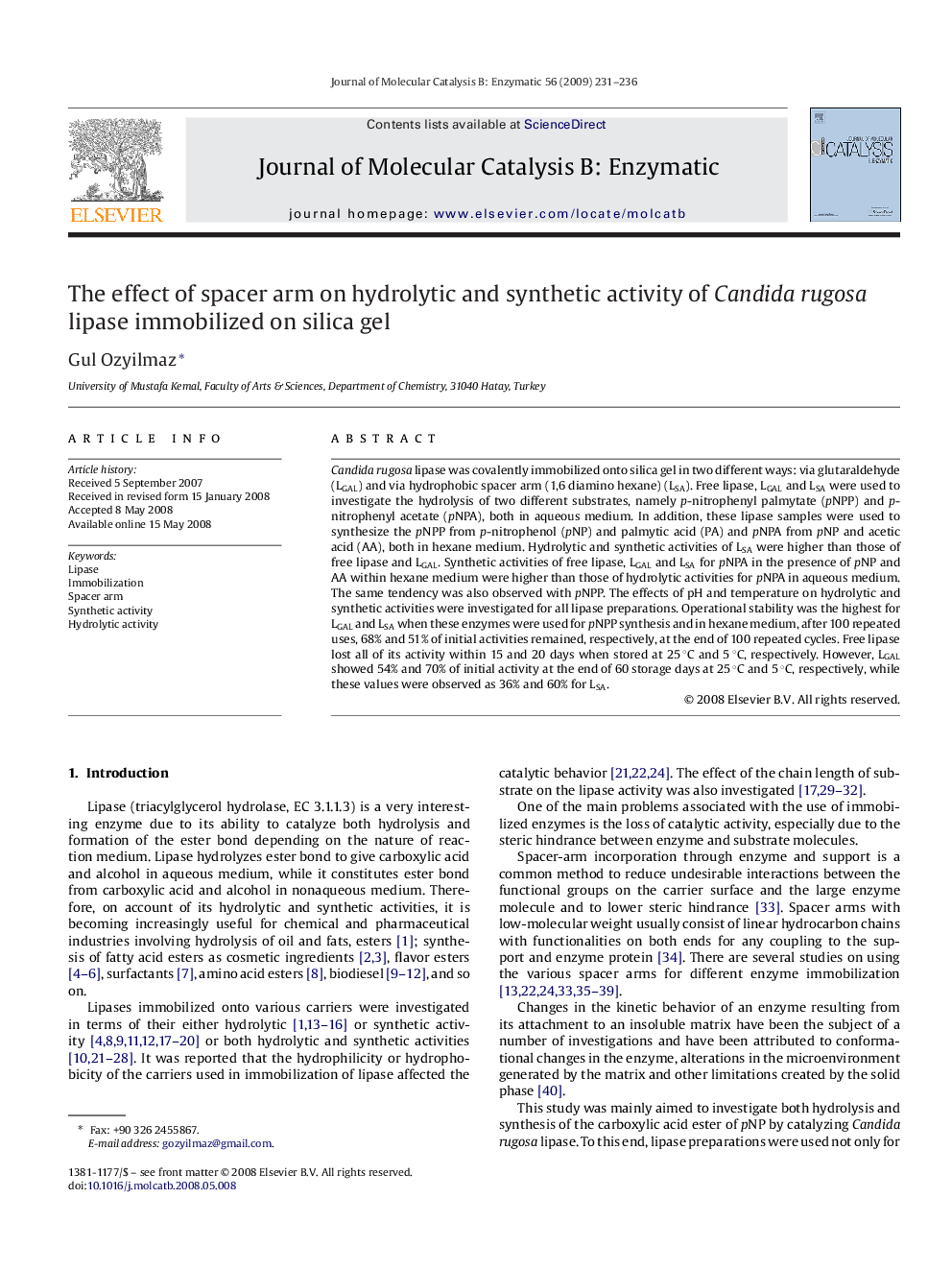| Article ID | Journal | Published Year | Pages | File Type |
|---|---|---|---|---|
| 70775 | Journal of Molecular Catalysis B: Enzymatic | 2009 | 6 Pages |
Candida rugosa lipase was covalently immobilized onto silica gel in two different ways: via glutaraldehyde (LGAL) and via hydrophobic spacer arm (1,6 diamino hexane) (LSA). Free lipase, LGAL and LSA were used to investigate the hydrolysis of two different substrates, namely p-nitrophenyl palmytate (pNPP) and p-nitrophenyl acetate (pNPA), both in aqueous medium. In addition, these lipase samples were used to synthesize the pNPP from p-nitrophenol (pNP) and palmytic acid (PA) and pNPA from pNP and acetic acid (AA), both in hexane medium. Hydrolytic and synthetic activities of LSA were higher than those of free lipase and LGAL. Synthetic activities of free lipase, LGAL and LSA for pNPA in the presence of pNP and AA within hexane medium were higher than those of hydrolytic activities for pNPA in aqueous medium. The same tendency was also observed with pNPP. The effects of pH and temperature on hydrolytic and synthetic activities were investigated for all lipase preparations. Operational stability was the highest for LGAL and LSA when these enzymes were used for pNPP synthesis and in hexane medium, after 100 repeated uses, 68% and 51% of initial activities remained, respectively, at the end of 100 repeated cycles. Free lipase lost all of its activity within 15 and 20 days when stored at 25 °C and 5 °C, respectively. However, LGAL showed 54% and 70% of initial activity at the end of 60 storage days at 25 °C and 5 °C, respectively, while these values were observed as 36% and 60% for LSA.
